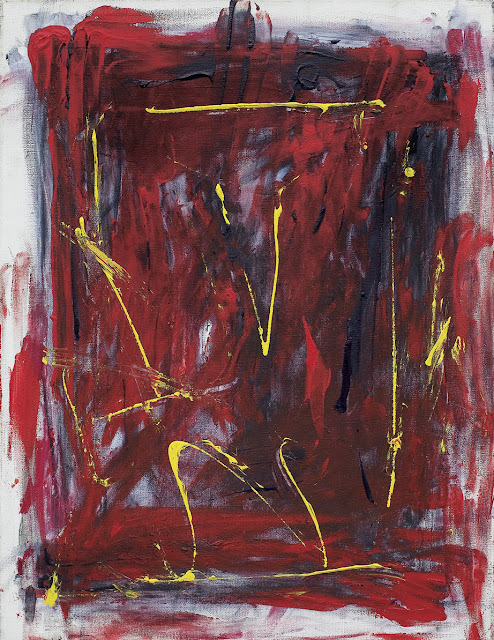Evelyne Axell (16 August 1935 – 10 September 1972) was a Belgian Pop painter. She is best known for her psychedelic, erotic paintings of female nudes and self-portraits on plexiglas that blend the hedonistic and Pop impulses of the 1960s.Axell's first painting were more classically based on oil. Axell soon after evolved a groundbreaking signature technique by using transparent and translucent plastic sheets from which she cut silhouettes of her voluptuous females and self-conscious heroines absorbed in (homo)erotic poses and activities. She enamel painted these contoured-cut sheets, often painting on both back and front surfaces, and mounted them on background panels to create layered, low relief images of the figures imbued with an opalescent, dream-like quality. With their upfront sexual imagery, the use of bright colors and manufactured plastic materials, their intense monochromatic surfaces and canvasses shaped like large sign post and public tableaux's, Axell's paintings owned the immediacy and commonality of Pop..Wikipedia
"Cutting female silhouettes into translucent plastic sheets and enamel painting, she created provocative works infused with desire and eroticism. From her early works until her premature death, Axell has depicted the female body and glorified female sexuality and fantasies ackling the deep changes occurring within an increasingly disputed, gendered, social order, Axell’s early works Licensed in Both Ways 1965 and Valentine 1966 depict the liberation of the female body and the uncovering of a feminist intimacy, within the context of the 1960s space race. Licensed in Both Ways builds on the motif of erotic voyeurism with added complexity: the viewer is at the same time being watched and invited to watch through the holes of the helmet, a metaphor for the head in which hidden erotic desires take place. .." .Elsa Coustou
September 2015 (tate.org.uk)
"Cutting female silhouettes into translucent plastic sheets and enamel painting, she created provocative works infused with desire and eroticism. From her early works until her premature death, Axell has depicted the female body and glorified female sexuality and fantasies ackling the deep changes occurring within an increasingly disputed, gendered, social order, Axell’s early works Licensed in Both Ways 1965 and Valentine 1966 depict the liberation of the female body and the uncovering of a feminist intimacy, within the context of the 1960s space race. Licensed in Both Ways builds on the motif of erotic voyeurism with added complexity: the viewer is at the same time being watched and invited to watch through the holes of the helmet, a metaphor for the head in which hidden erotic desires take place. .." .Elsa Coustou
September 2015 (tate.org.uk)

























































